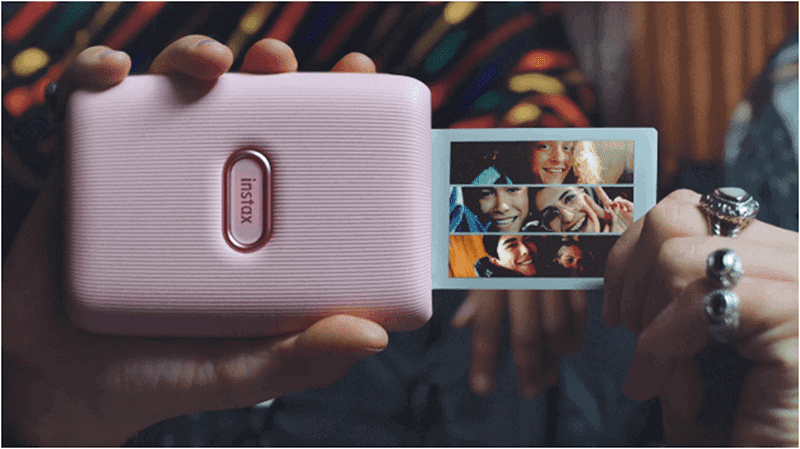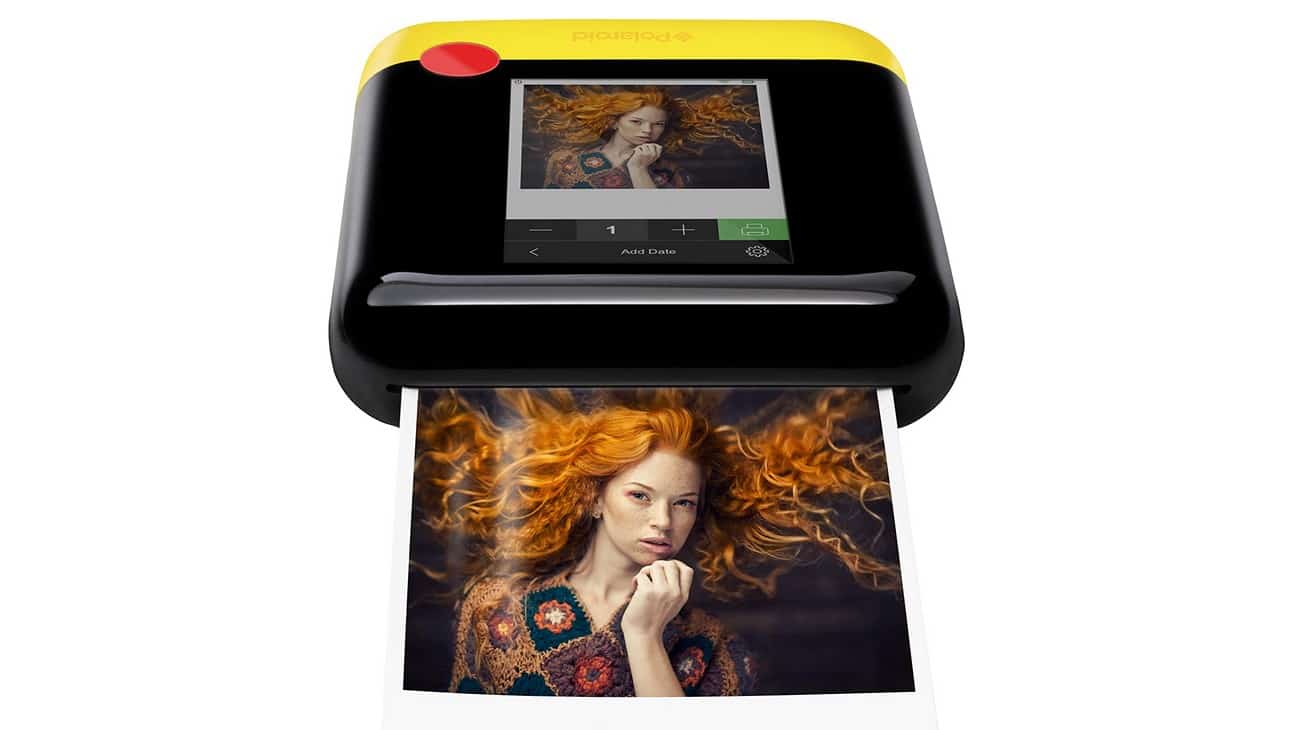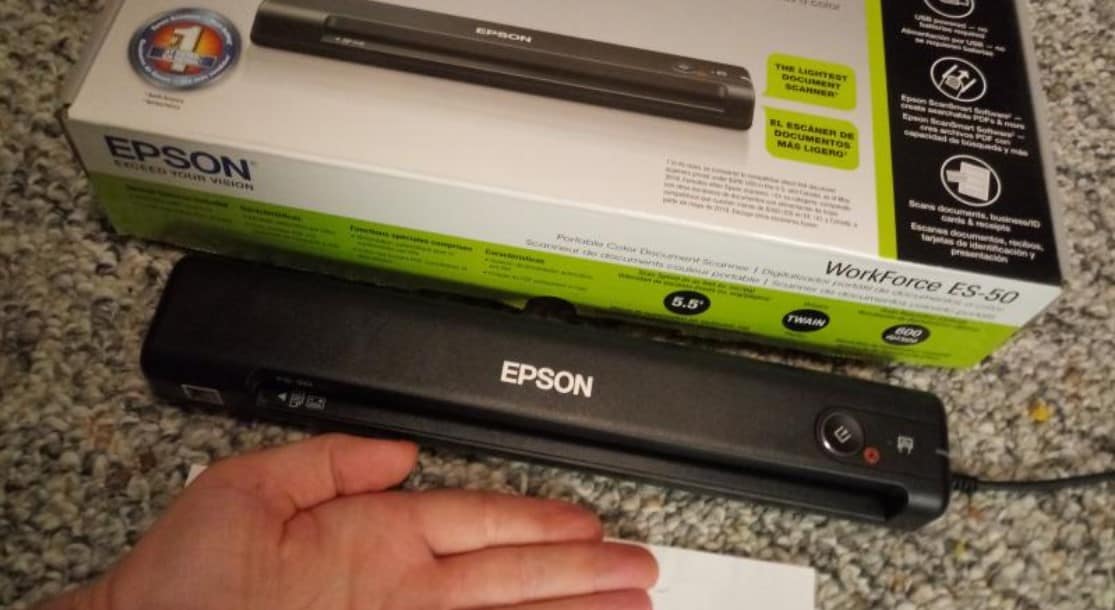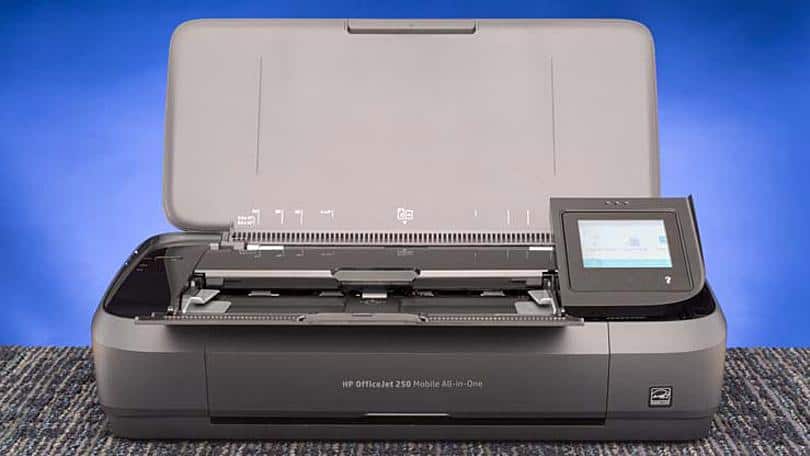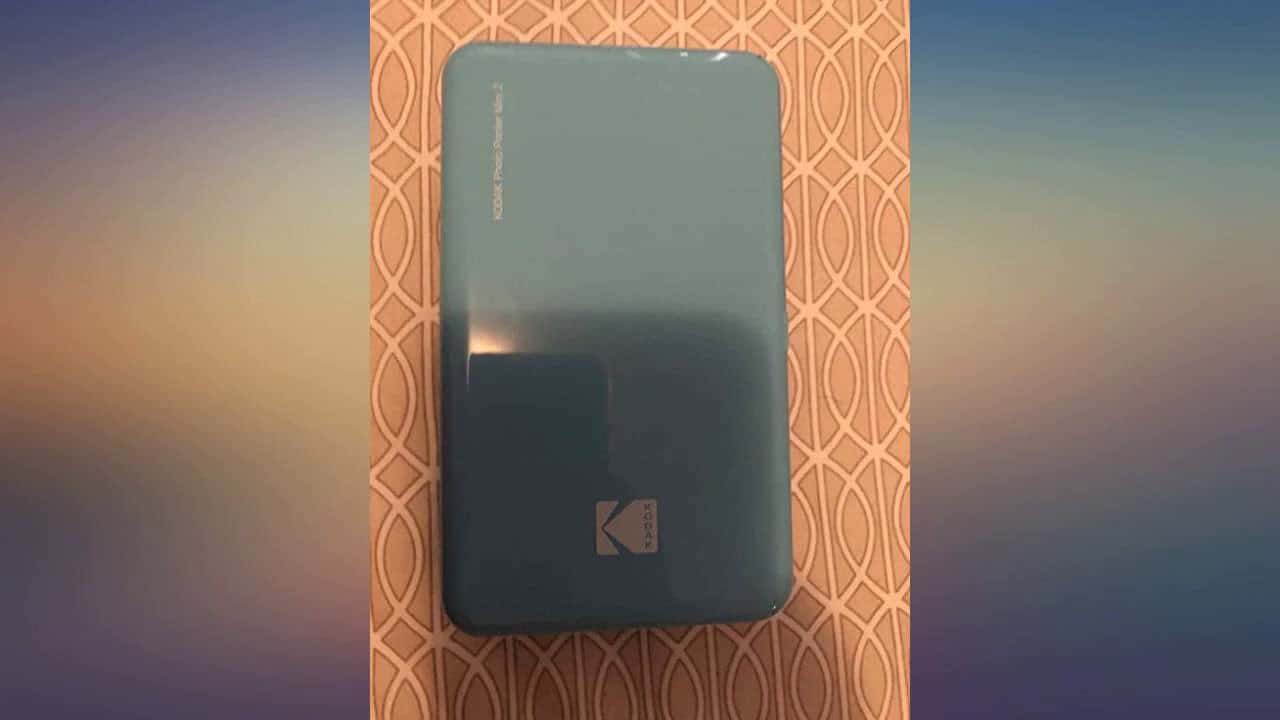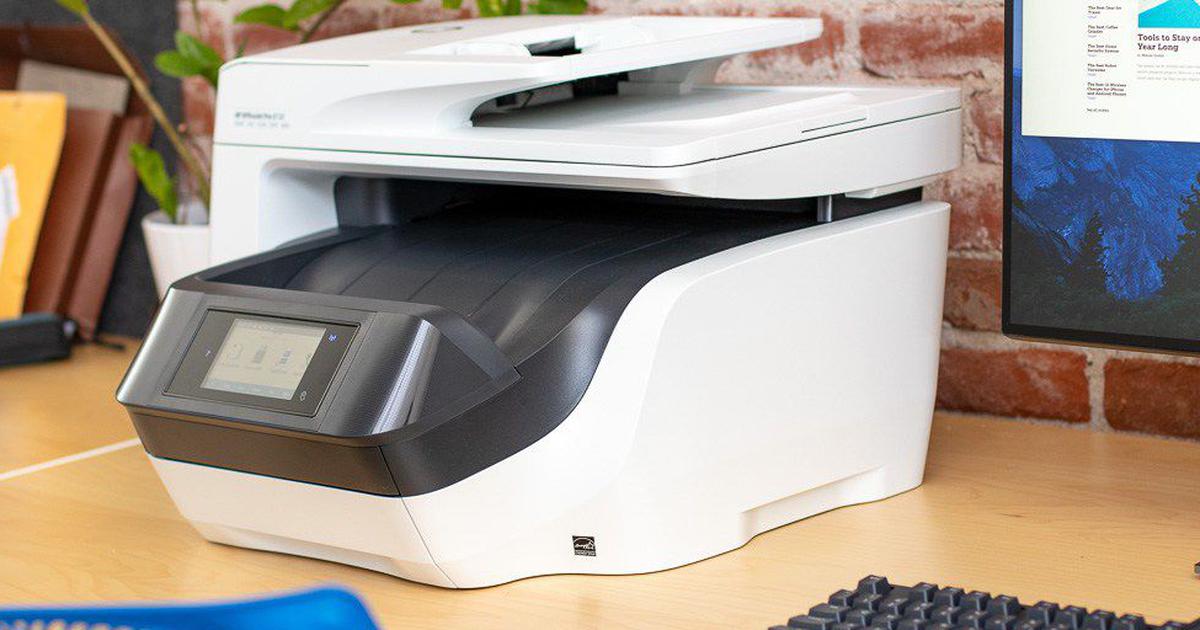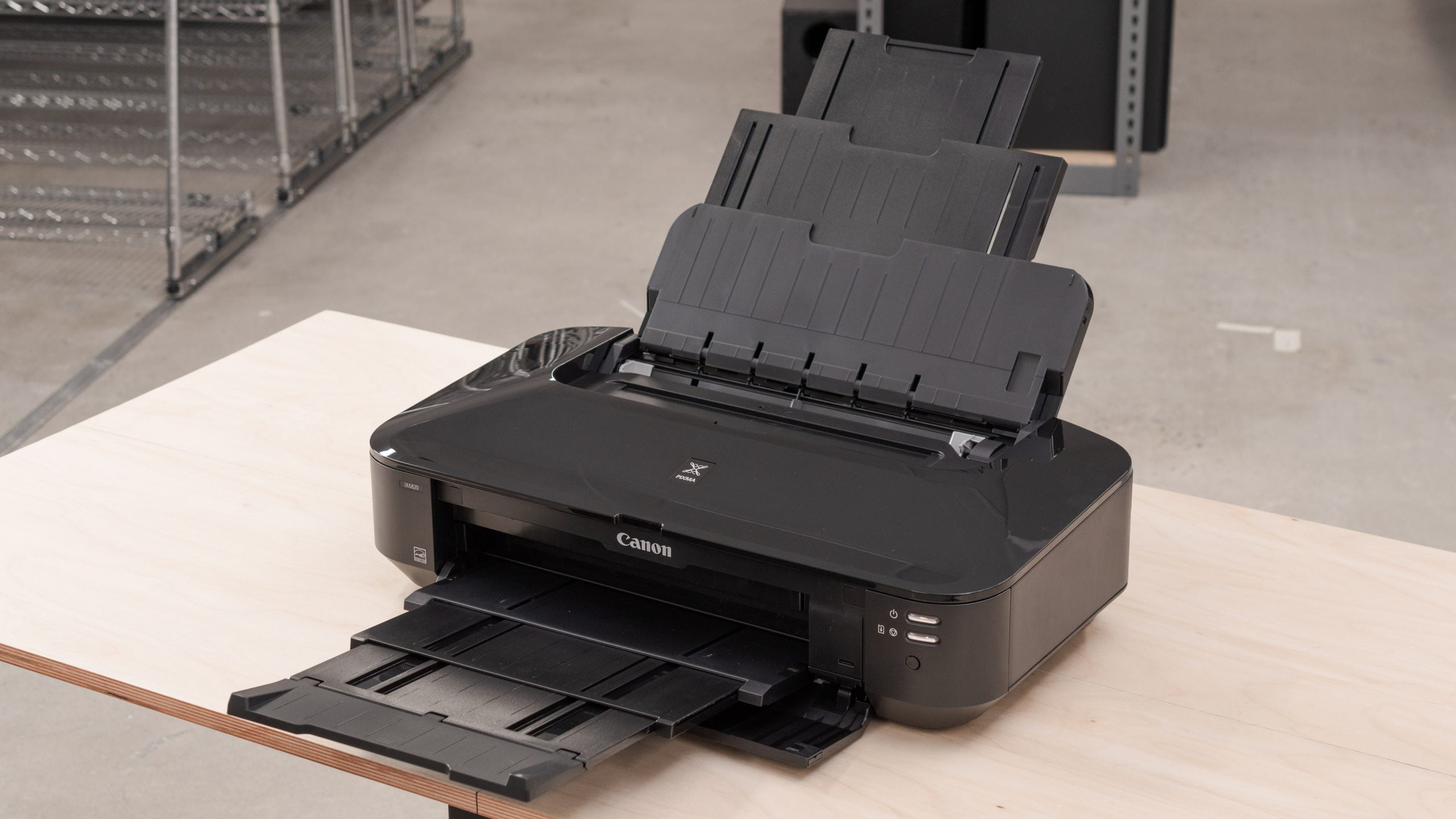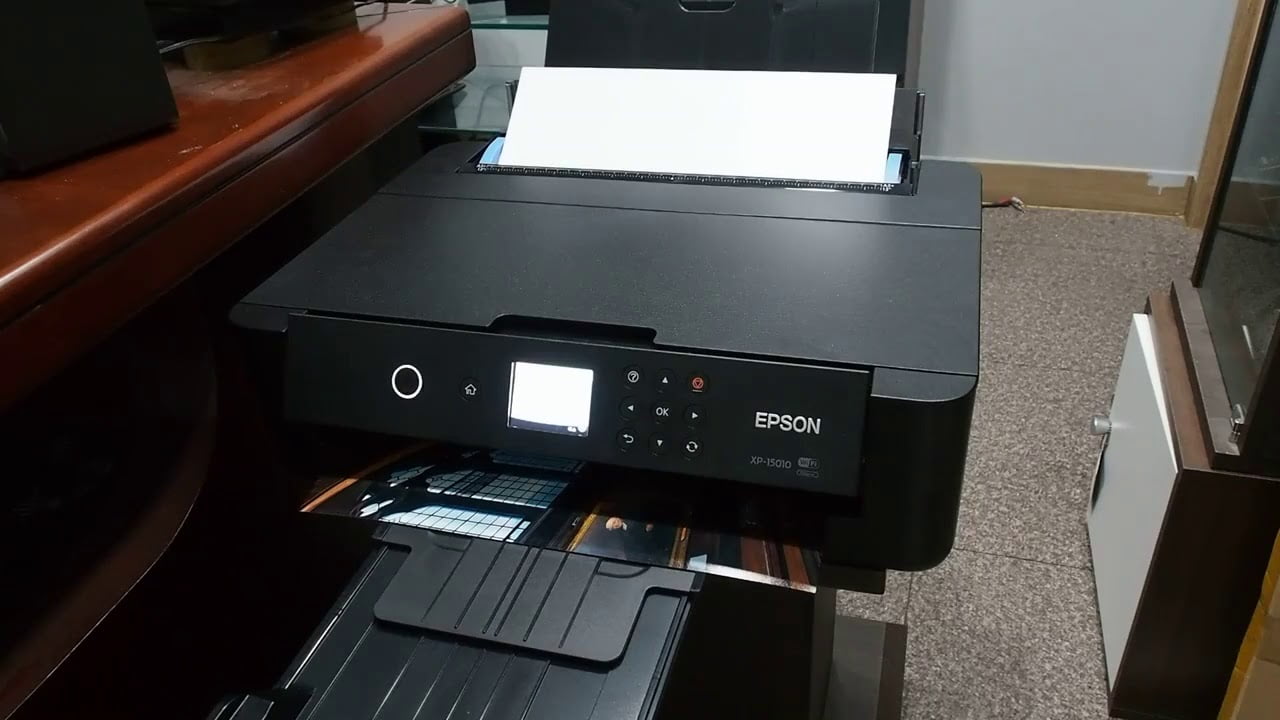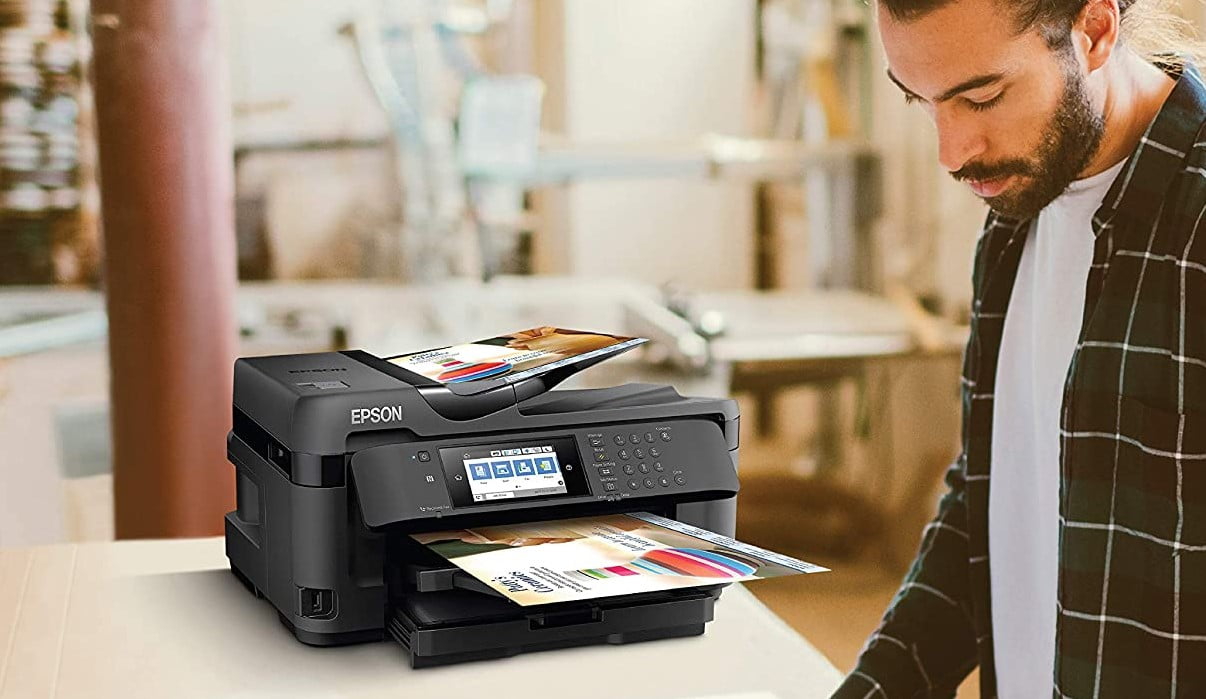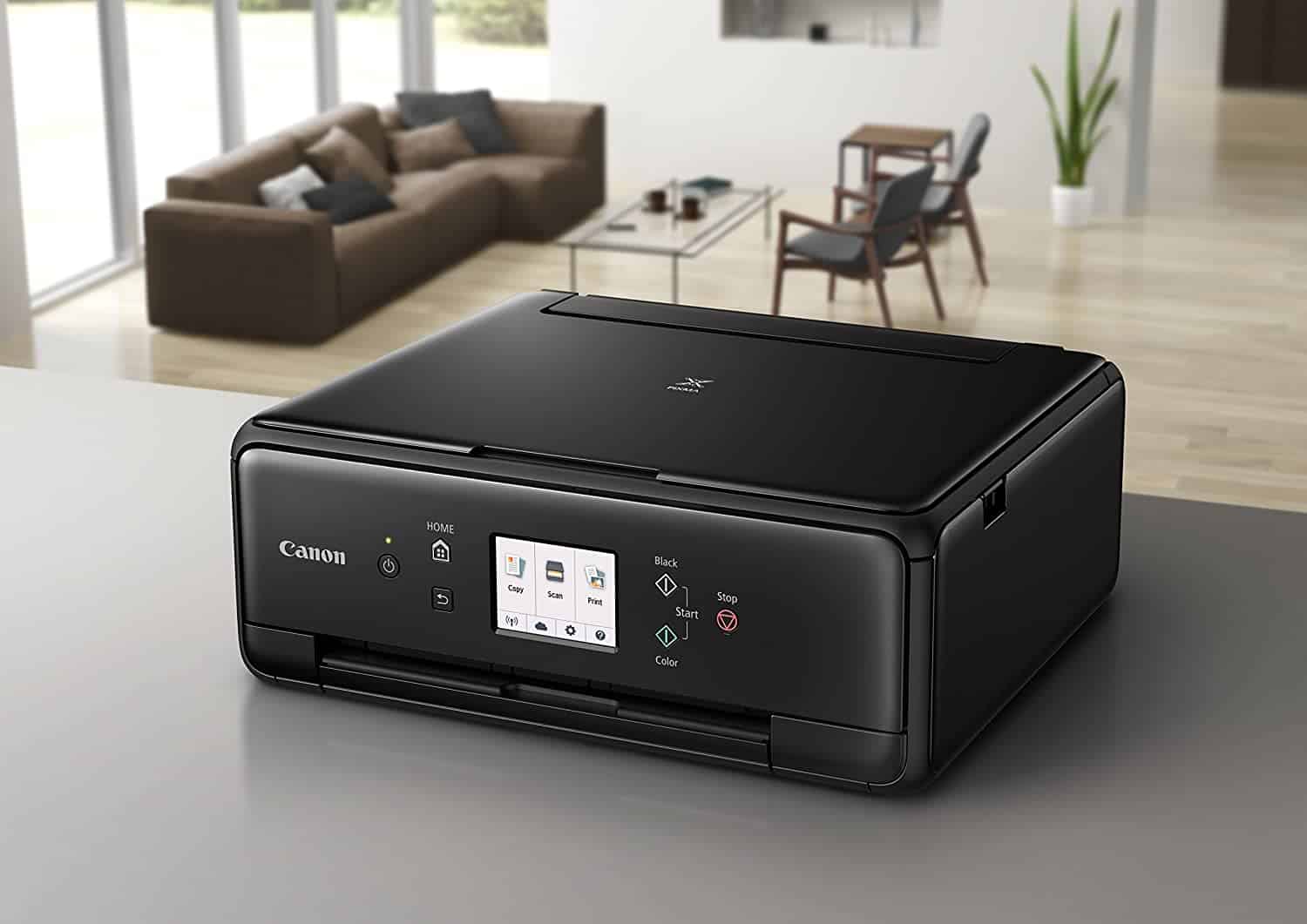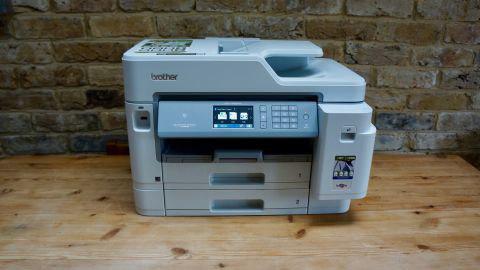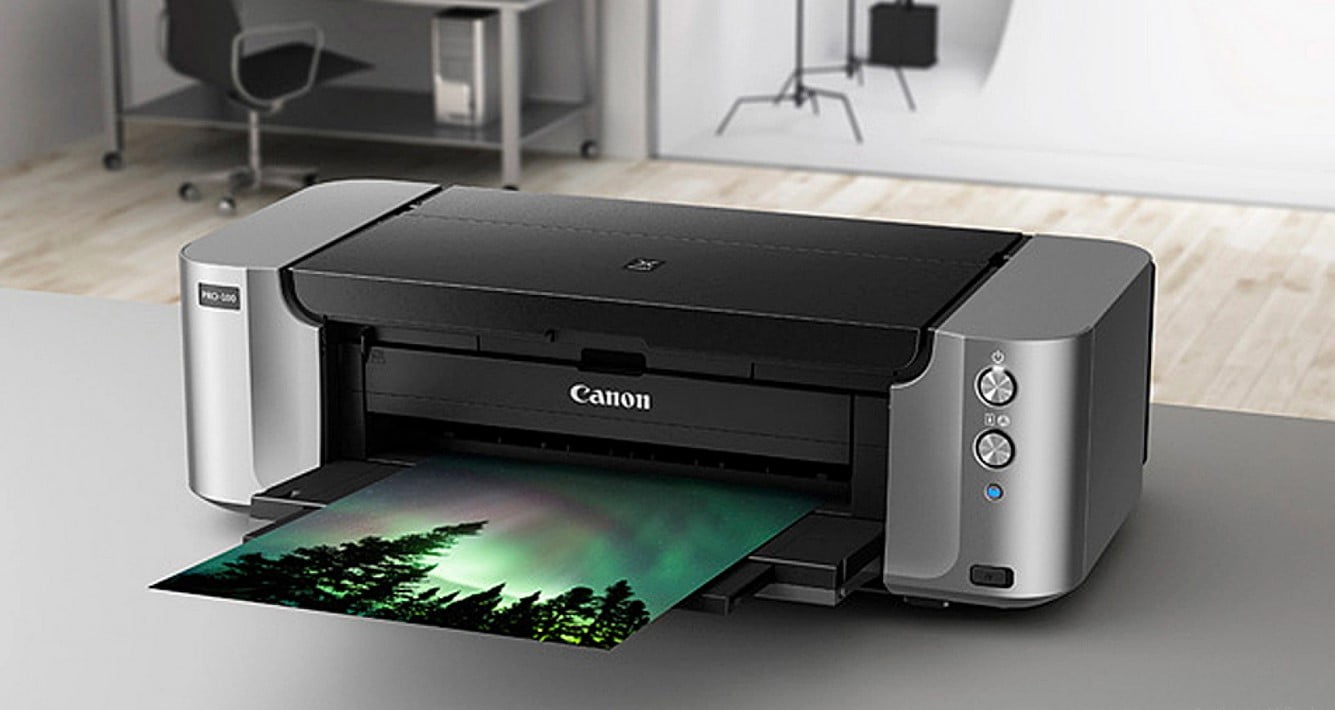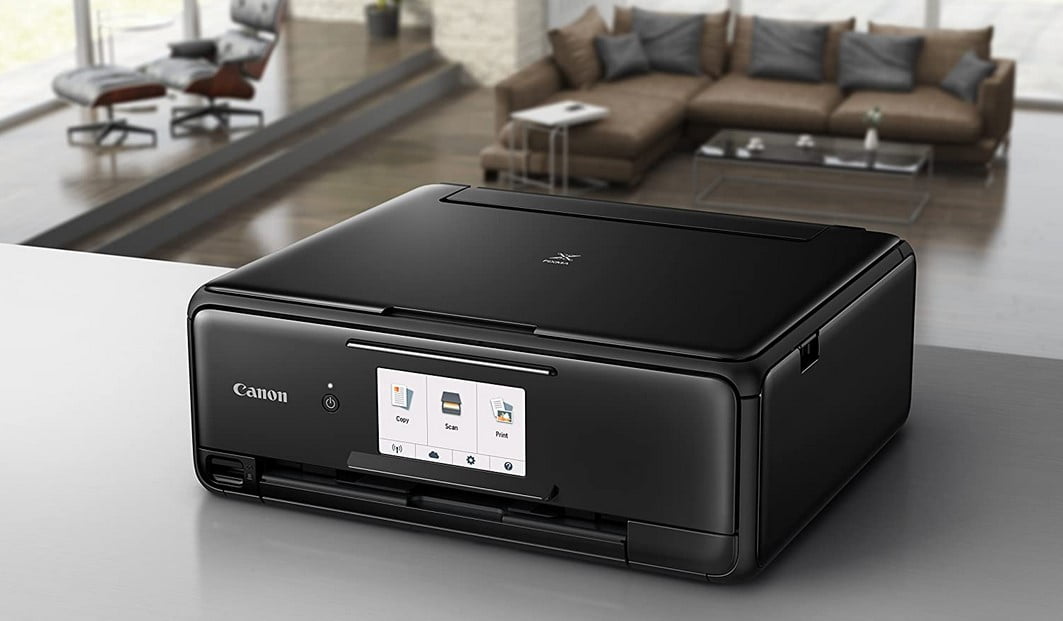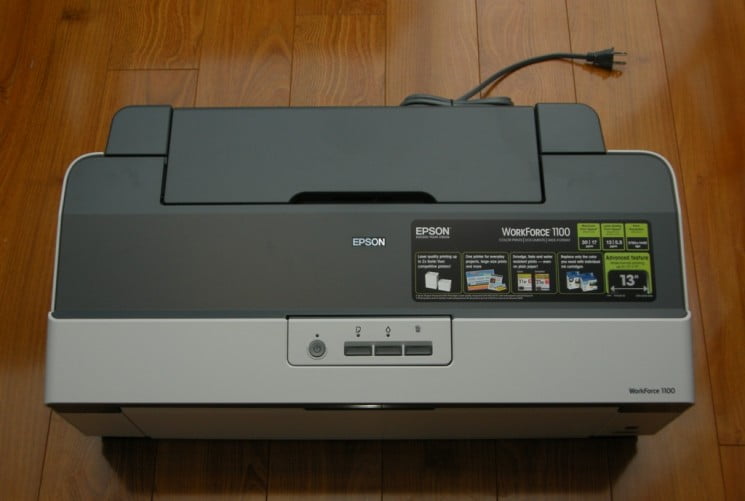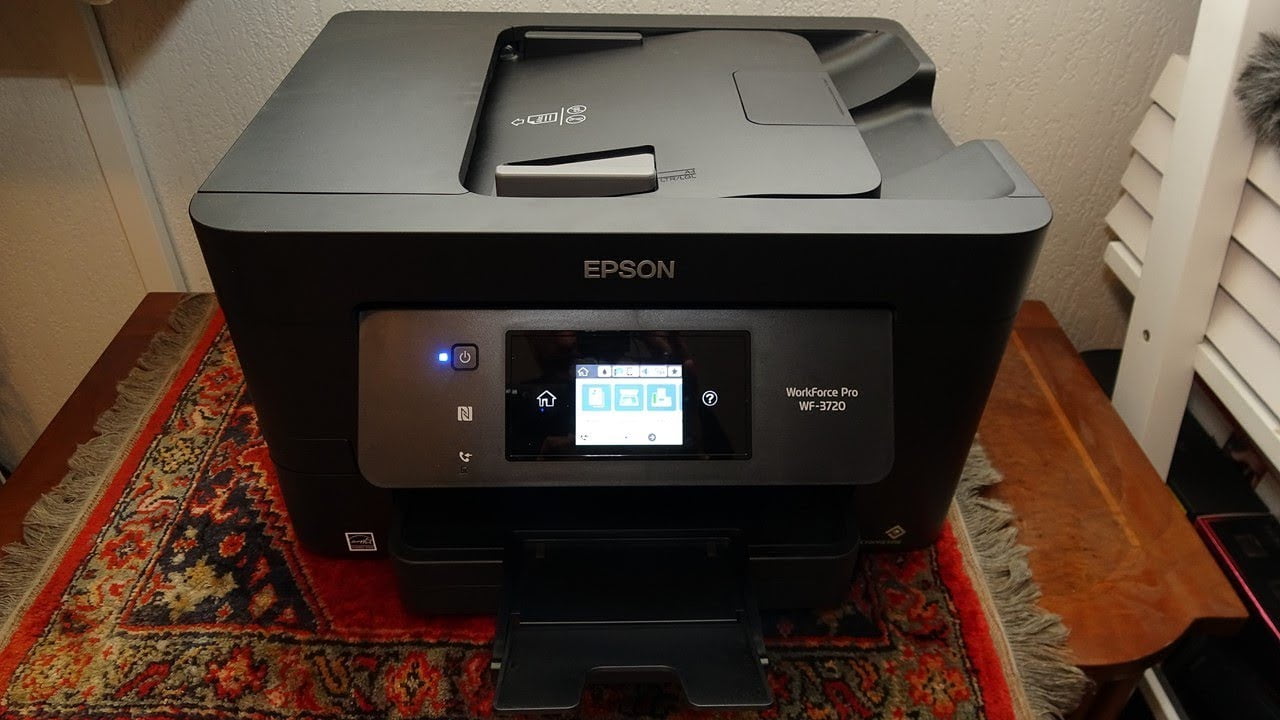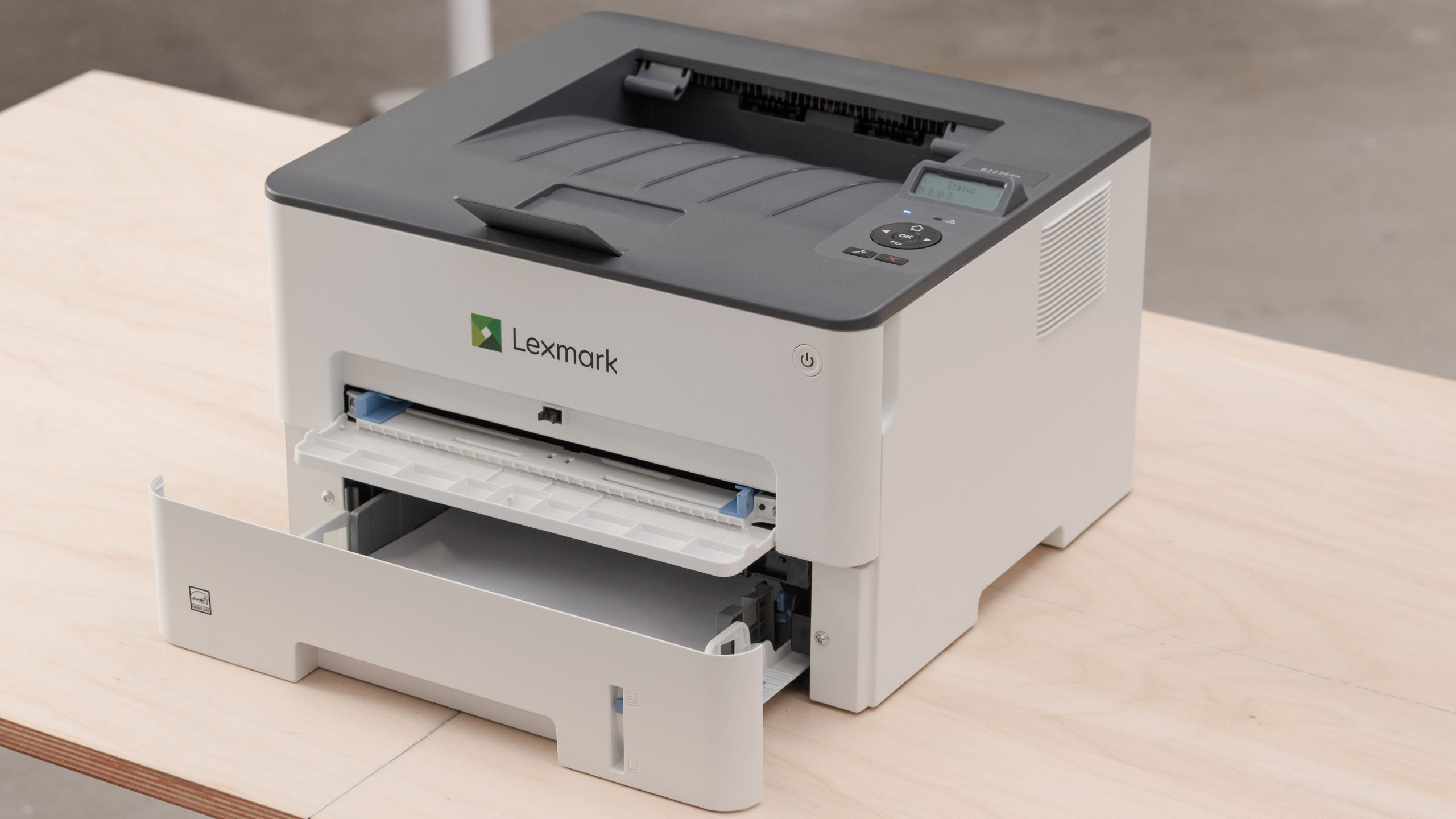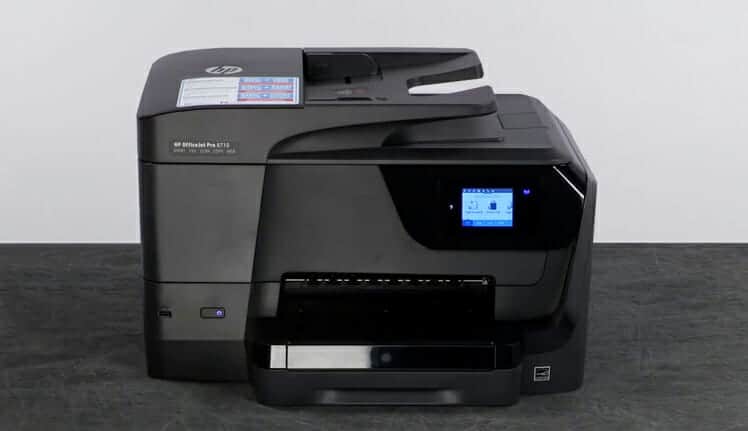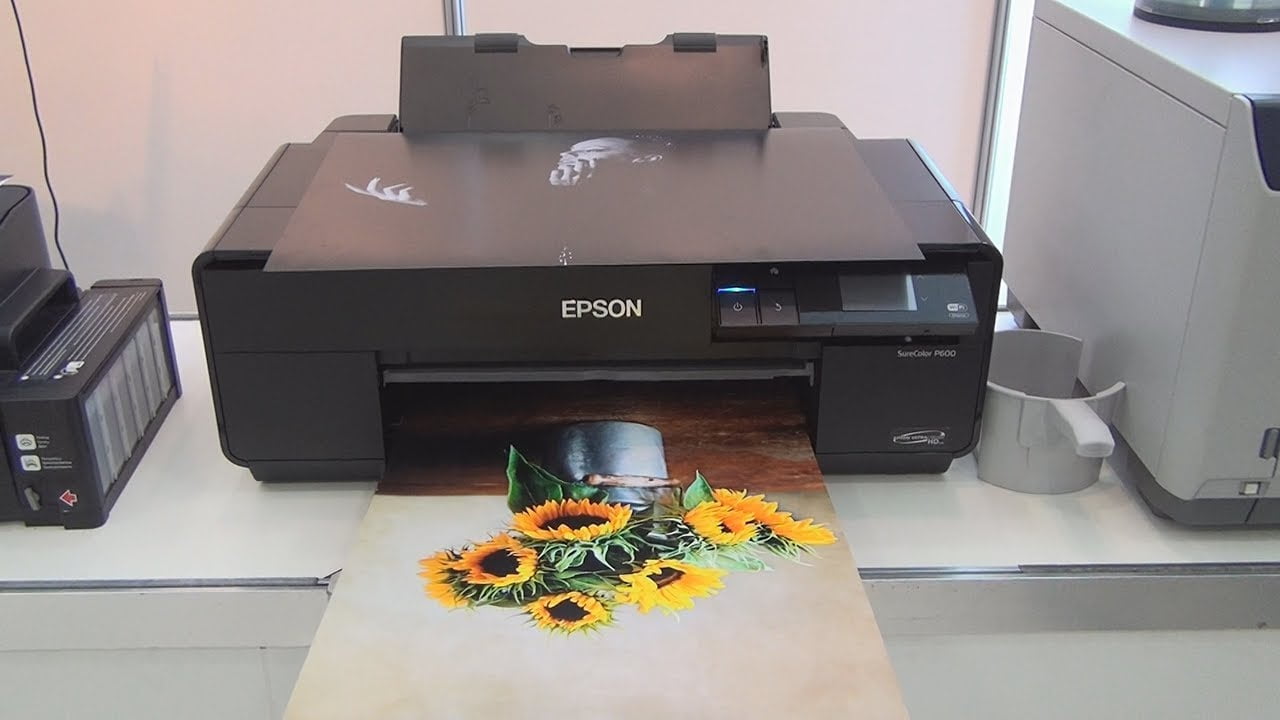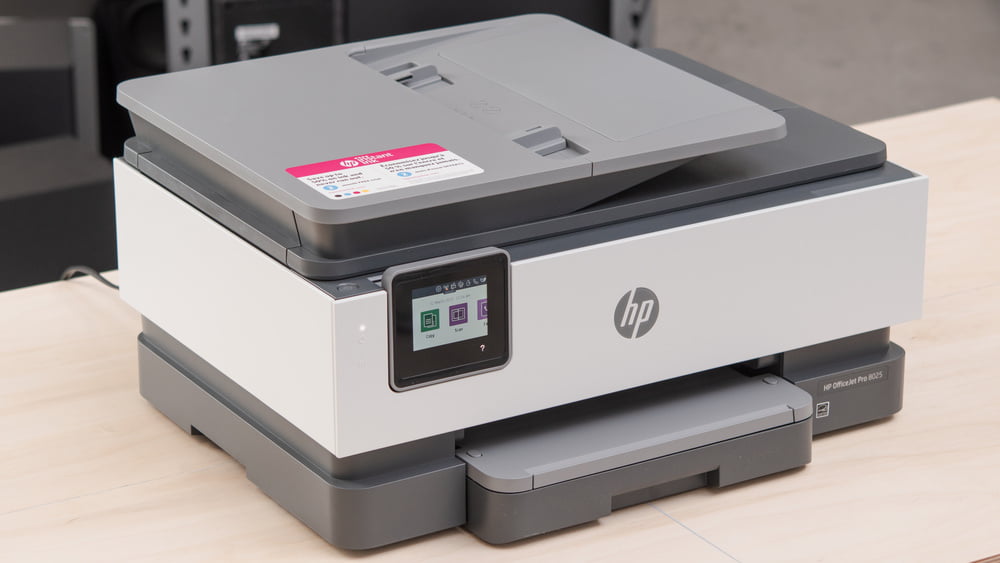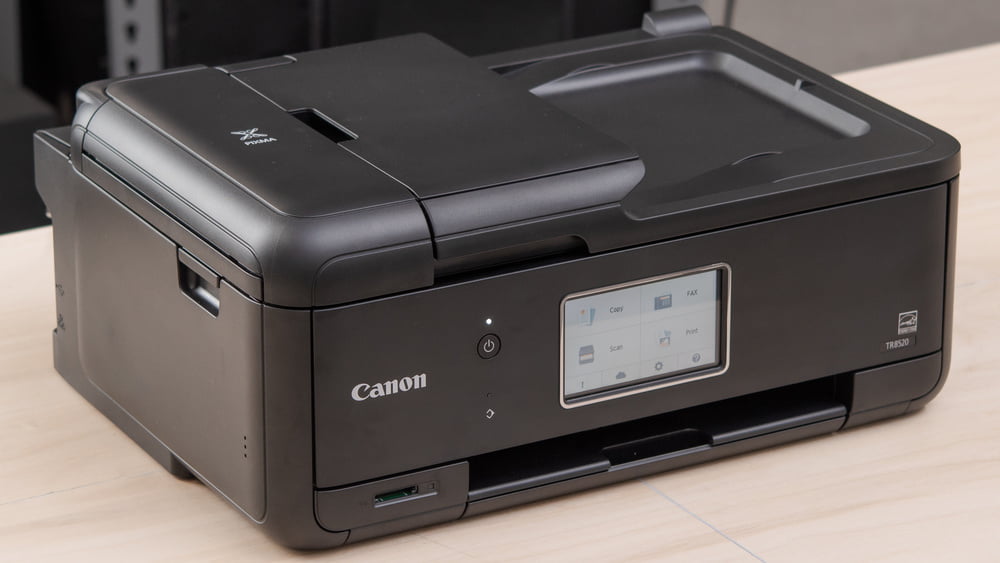If you’re into crafting, at some point, the question is going to come up about printing on fabric. Sure, you could buy a silk screen printing machine or invest in a popular Cricut machine, but sometimes those solutions come with steep learning curves. Instead, you might be able to turn your top-rated printer into a fabric printer with a few easy modifications.
KEY TAKEAWAYS:
- Inkjet printer quality is the biggest determiner of how well your fabric prints will come out.
- Preparing the fabric properly so that it has enough stiffness to pass through the printer feed is important.
- Pay attention to the printer feed as L-shaped is better than U-shaped for fabric printing.
Good to Know
While you can turn your home inkjet printer into a fabric printing machine, it’s important to know that every inkjet printer works differently and there are common drawbacks to attempting this DIY hack. Most often, you might experience ink bleeding or fading. And you may find that the soft nature of fabric can make nailing this hack a little difficult. But if you’ve got patience and a can-do attitude, modifying your paper printer into a fabric printer can be done. Your inkjet printer can also print on glossy photo paper as long as you consider the quality and weight of the paper.
What You’ll Need
So, you’re ready to start printing fabric at home? Great, you’ll need the following:
- Images from your computer or photos to print
- An inkjet printer — do not use a laser printer
- Fabric
- (optional) Ink fixative spray to prevent your print from smudging, and iron-safe paper
Printer Quality Matters
Not all inkjet printers are created equal. Some models are designed with fabric settings which makes them ideal for attempting to print on fabric. Look for printers with water-resistant ink pigments which will last longer than dye-based inks. *If you use a high-quality printer,* you can print on a legal-size paper, three times larger than a standard paper.
Likewise, pay attention to the feed method. Experts agree that L-shaped feeds where paper is fed through the top of the printer and the finished product exits from the front are best. In contrast, U-shaped feeds where paper enters and exits from the same panel, are more likely to cause jams or cause smudging.
Insider Tip
Some models are designed with fabric settings which makes them ideal for attempting to print on fabric. Look for printers with water-resistant ink pigments which will last longer than dye-based inks.
Let’s Get Printing
You’ve got your printer and your pictures or images queued and ready to go. But there are still a few steps to follow.
Prepping the Fabric
You can’t just cut off a swatch of fabric from a bolt and try to feed it through a printer. Instead, experts recommend using fabric sheets that are intended for printing. They usually feature paper backing which gives them more structure. These can also come in versions that are waterproof which makes them machine washable, but you’ll need special ink for that.
DIY Fabric Sheets
If you want, you can make fabric sheets by using a medium-weight plain cotton fabric and freezer paper or using a special solution to coat the fabric to stiffen it. After applying the solution and letting it dry, use a dry iron to smooth the fabric.
Ensuring Colorfastness
For the easiest prep work, use a commercial solution and soak pre-washed fabric in it for about 10 minutes. Line dry the fabric before attempting to print on it.
Printing
Cut the fabric sheet to your necessary size and load it into your printer’s paper tray. Using your preferred printing software (Photoshop, Canva, etc.) load the image(s) you want to print and be sure to fit it to the size of your fabric sheet, leaving space for bleed.
Once you’re ready, begin printing the image on your fabric sheet. Let the sheet feed through the printer and avoid trying to force the fabric feed as this can cause the image to print blurry.
Insider Tip
Experts agree that L-shaped feeds where paper is fed through the top of the printer and the finished product exits from the front are best.
Prepping and Testing Your Image
Try to avoid printing to the edges of your printable area to avoid the risk of the image getting cut off. Also, check the resolution to ensure that the final printed image won’t be blurry or unrecognizable. Ideally, opt for a resolution between 200 to 300 dpi to get proper detailing in your photo. When in doubt, test your image on a paper print before you use the fabric sheets.
Heat Setting the Fabric
Once you’re satisfied with the print, you need to heat set it to preserve the color. Wait until the ink is dry — which can be anywhere from a few hours to a couple of days. Although, waiting a few days is best.
Ironing
Using brown paper or heat-safe paper, cover the fabric sheet and then begin ironing the fabric through the paper. Use the hottest setting possible that the fabric can withstand. Avoid holding the iron still to prevent burning the fabric.
Setting Spray
Another way to preserve the print and color is to use a setting spray. While you can make a DIY spray, you can also find commercial options. Spray a few thin layers over the print and let it dry fully before attempting to use it to complete your crafting project.
Warning
U-shaped feeds where paper enters and exits from the same panel, are more likely to cause jams or cause smudging.
F.A.Q.
Can I print on fabric with an inkjet printer?
Yes, you can. However, you need to consider the quality of your printer and ensure that you’ve properly prepped the fabric to prevent jamming during the printing process.
How do you heat set fabric after printing?
While many people simply iron over the fabric with brown paper after it’s dried, you can also try a setting spray to help maintain the color and prevent fading.
Will vinegar set ink on fabric?
Yes, it can. You’ll need to let it dry first before trying this but remove the paper backing once dry and then soak the fabric in a vinegar bath to set the ink.
STAT: Some printers have settings for fabric built into them ( like some models of Epson printers) they have water-resistant pigment inks (though water resistant inks do not mean that they are waterproof. The ink will fade somewhat after many washes, if not at the first wash). (source)
REFERENCES:
- https://sewguide.com/printing-onto-fabric-with-inkjet-printer/
- https://www.instructables.com/Inkjet-Printing-on-Fabric/
- https://www.linda-matthews.com/printing-photos-on-fabric-using-an-inkjet-printer/r
- https://thegraphicsfairy.com/print-fabric-freezer-paper-method-2/
- https://www.1ink.com/blog/how-to-print-on-fabric-with-an-inkjet-printer/

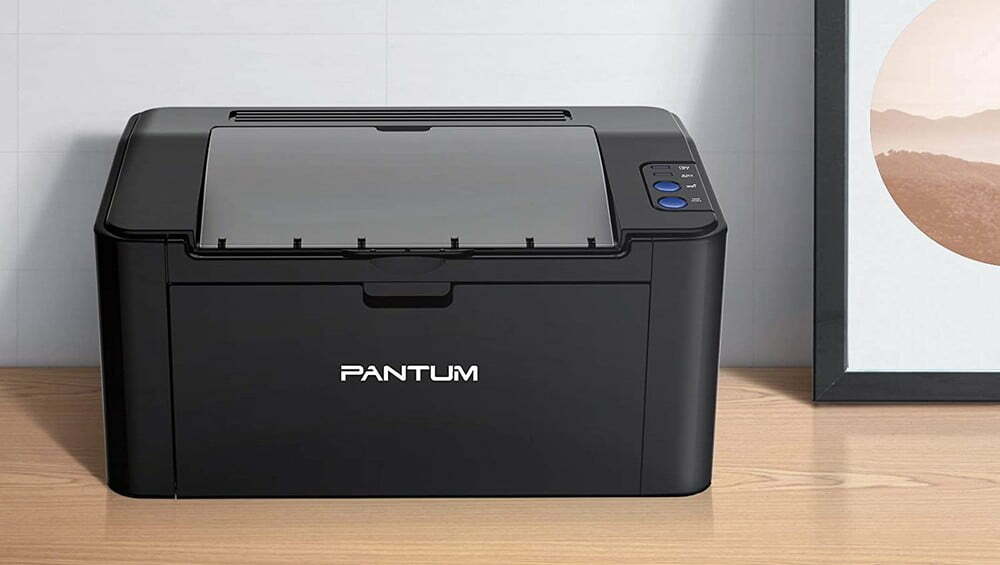













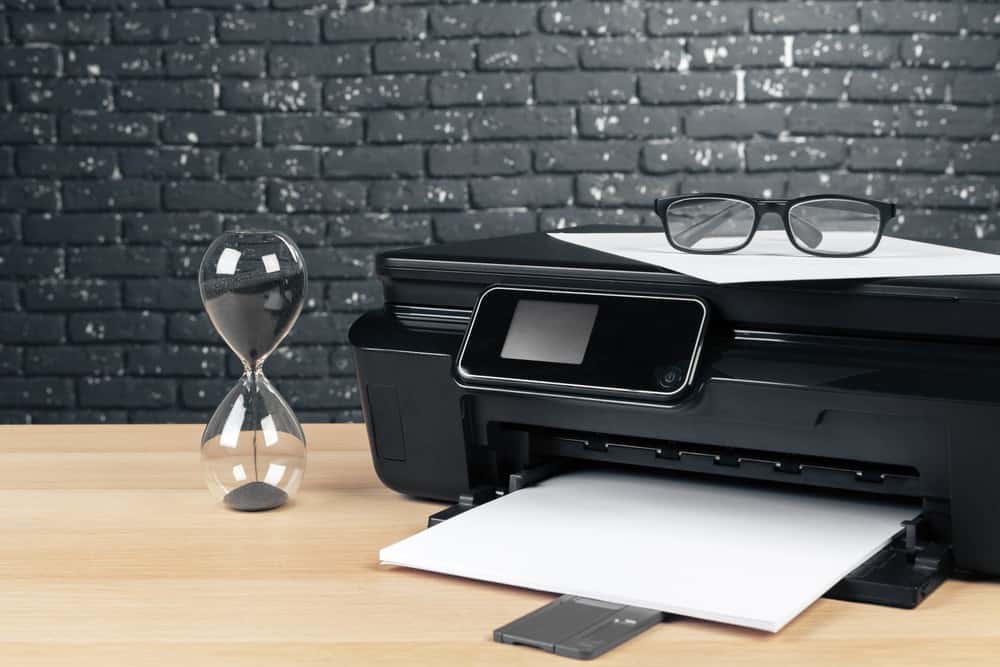
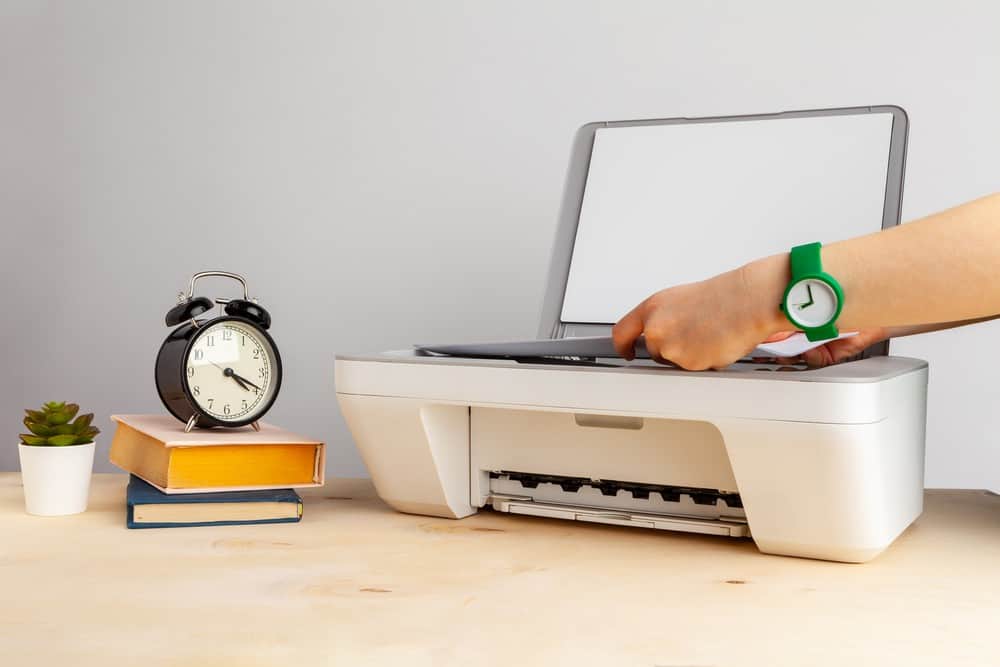
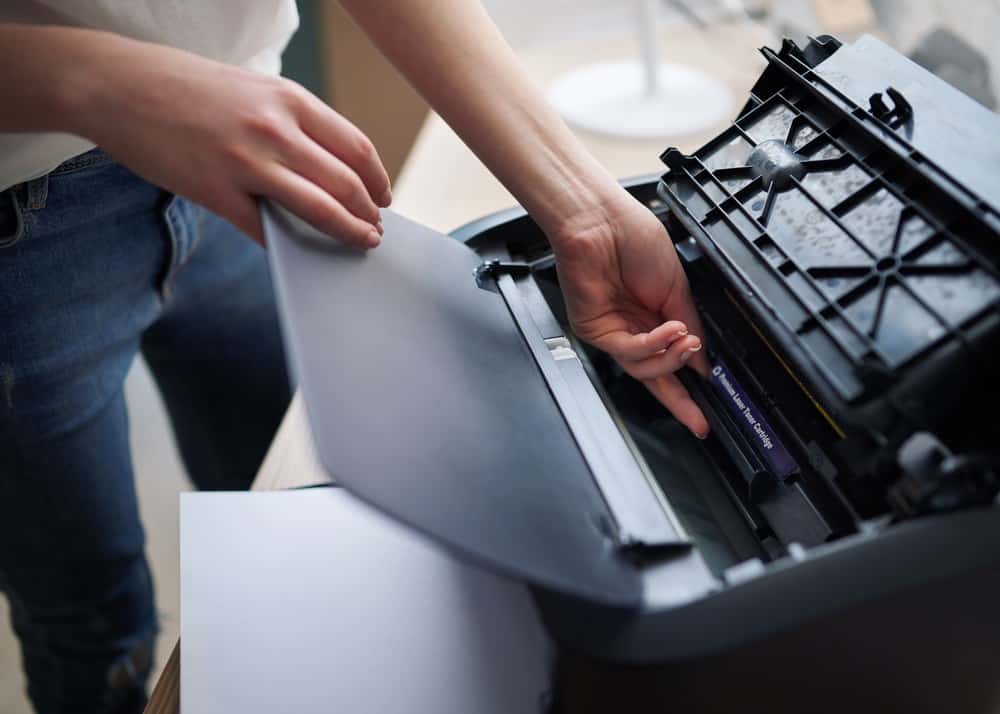
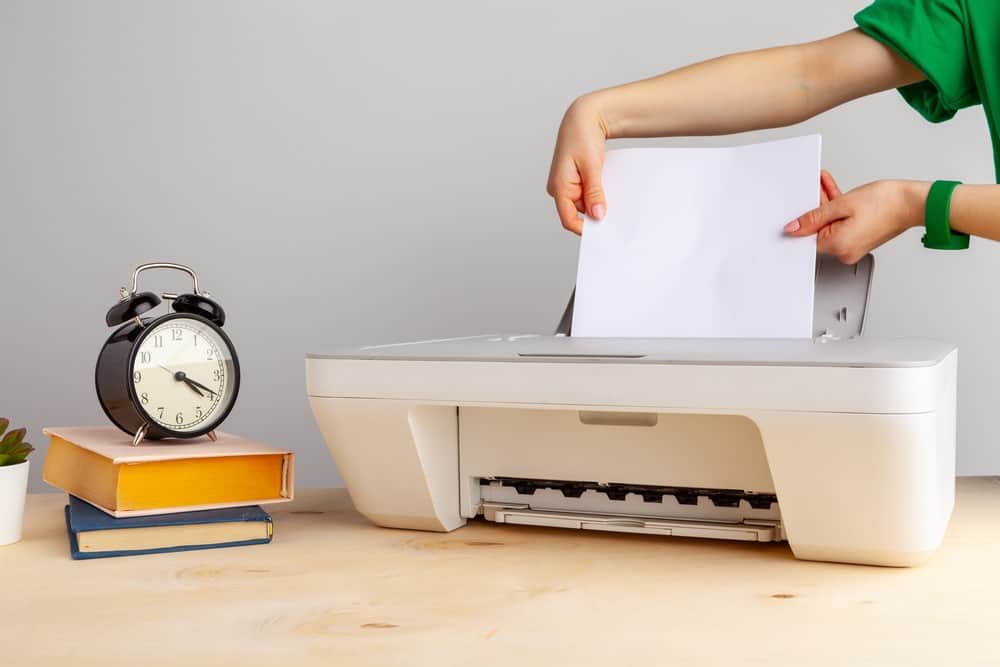
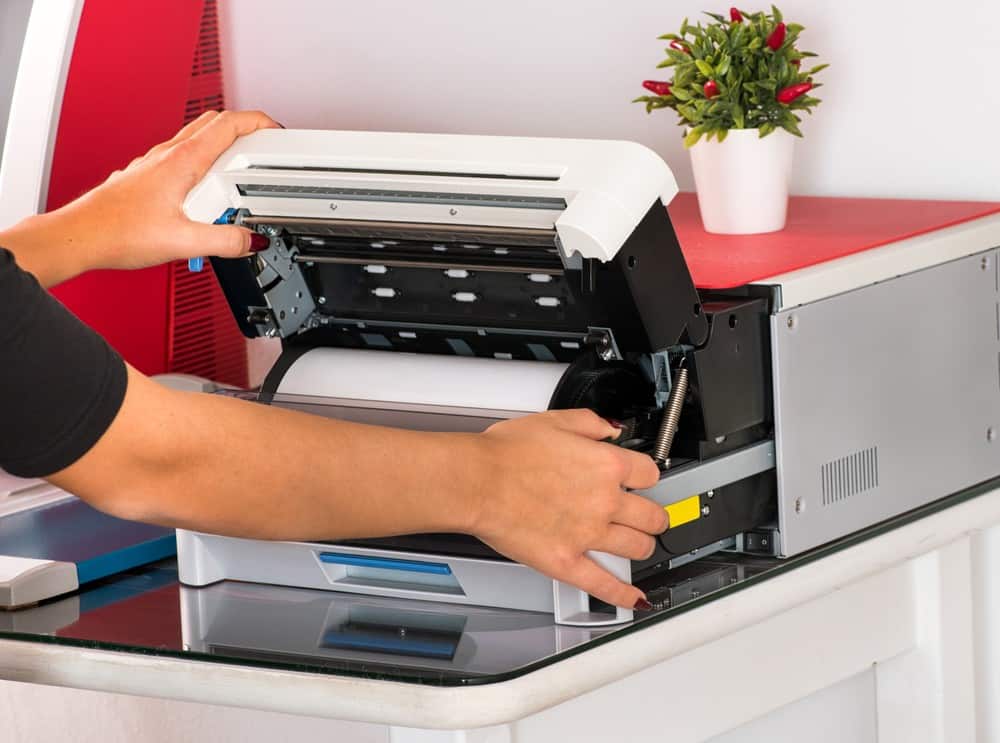
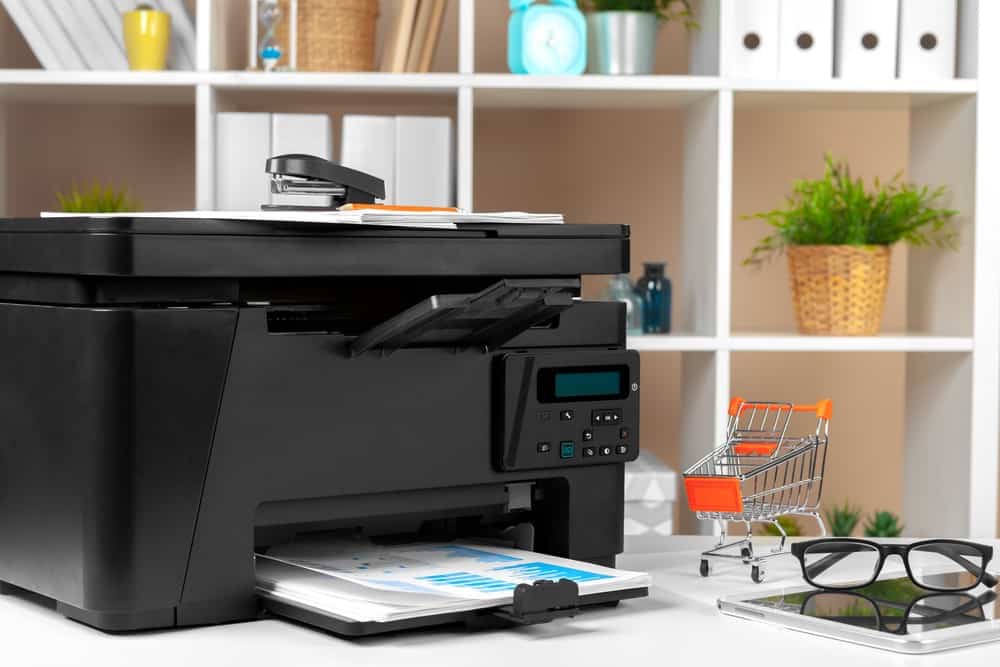
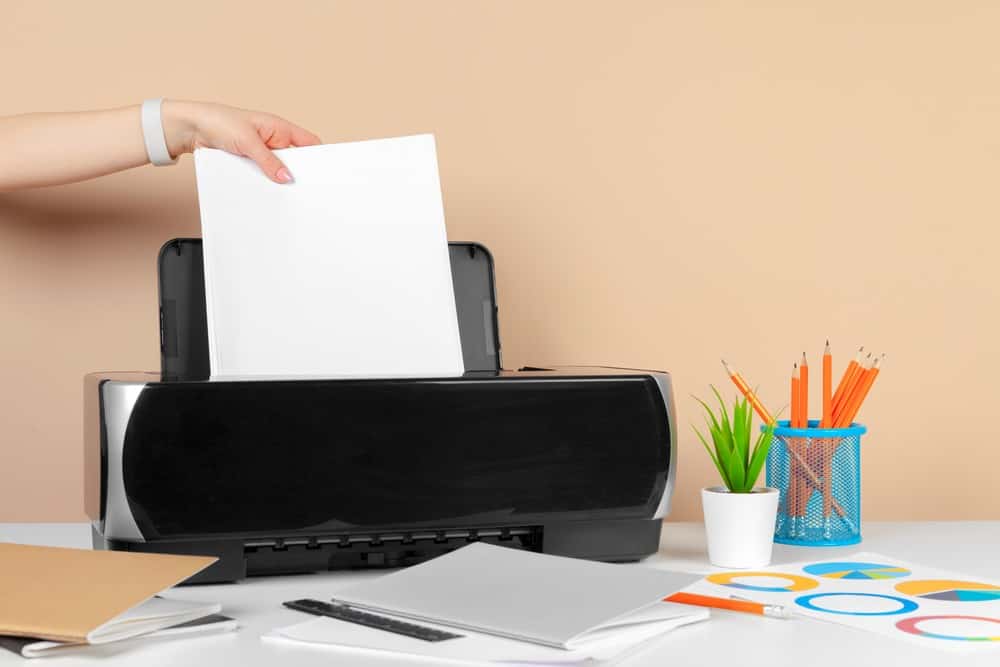
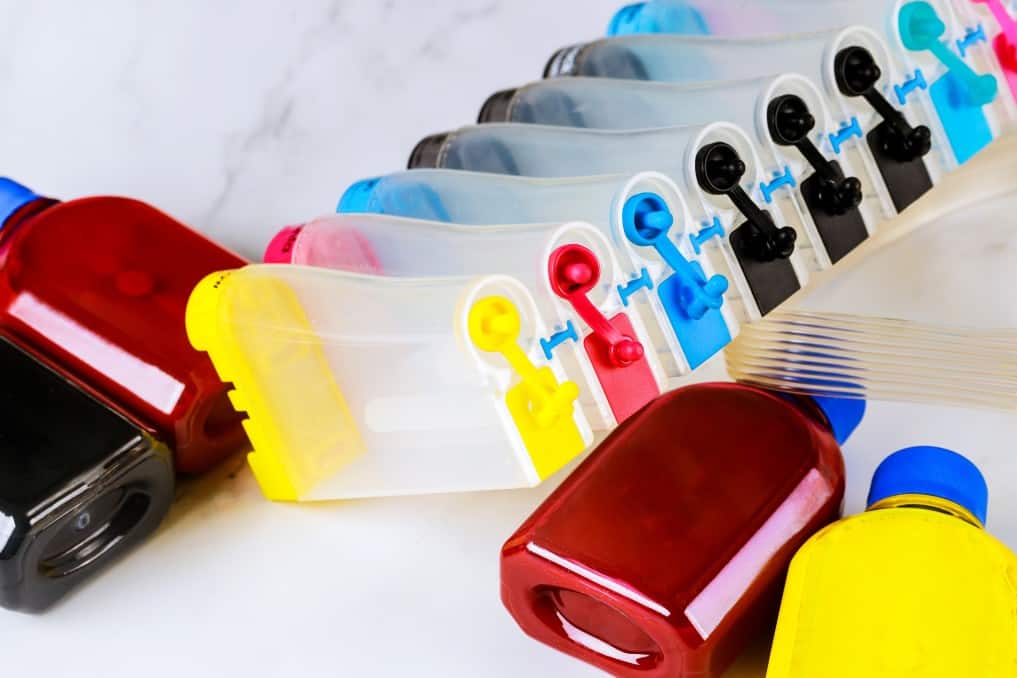
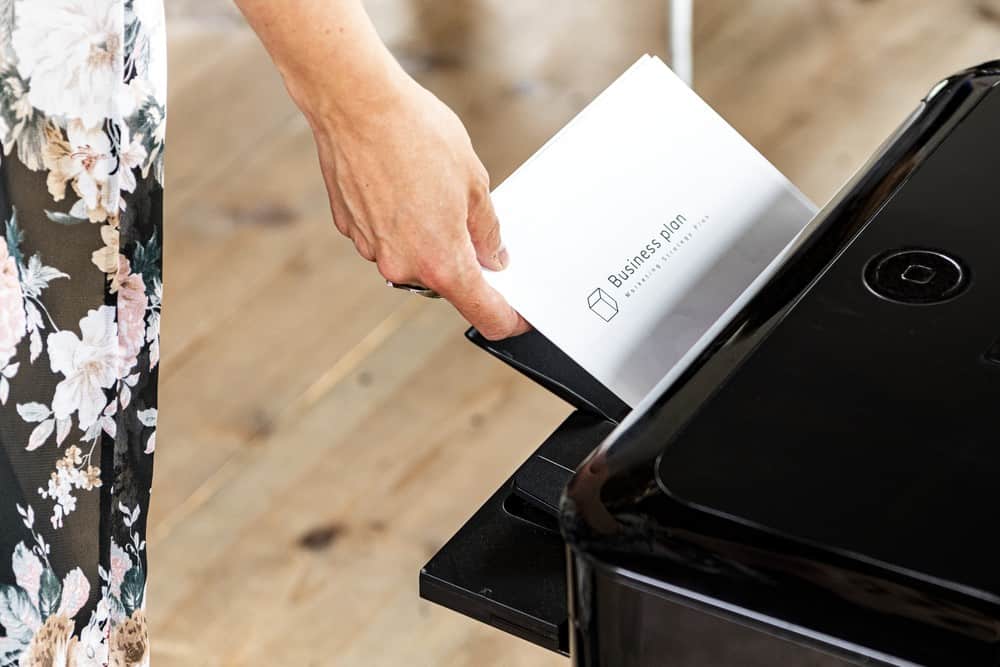
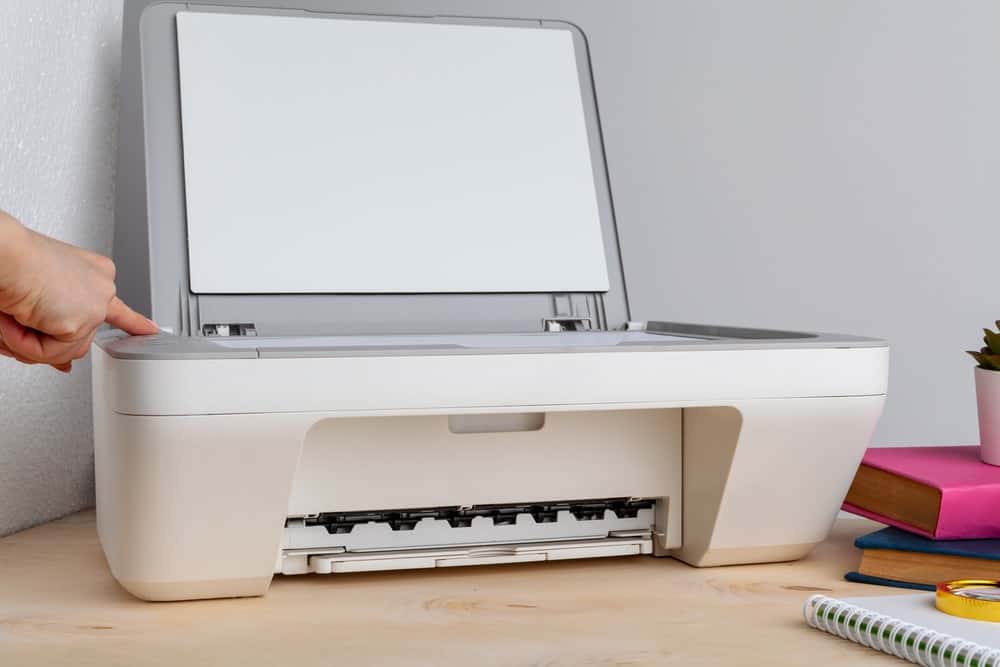
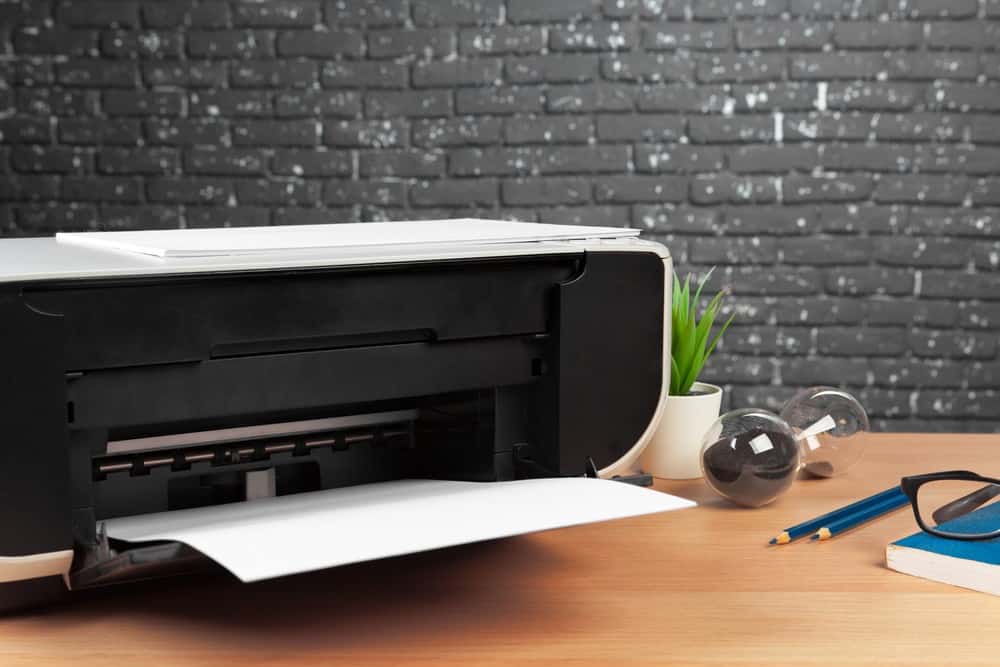
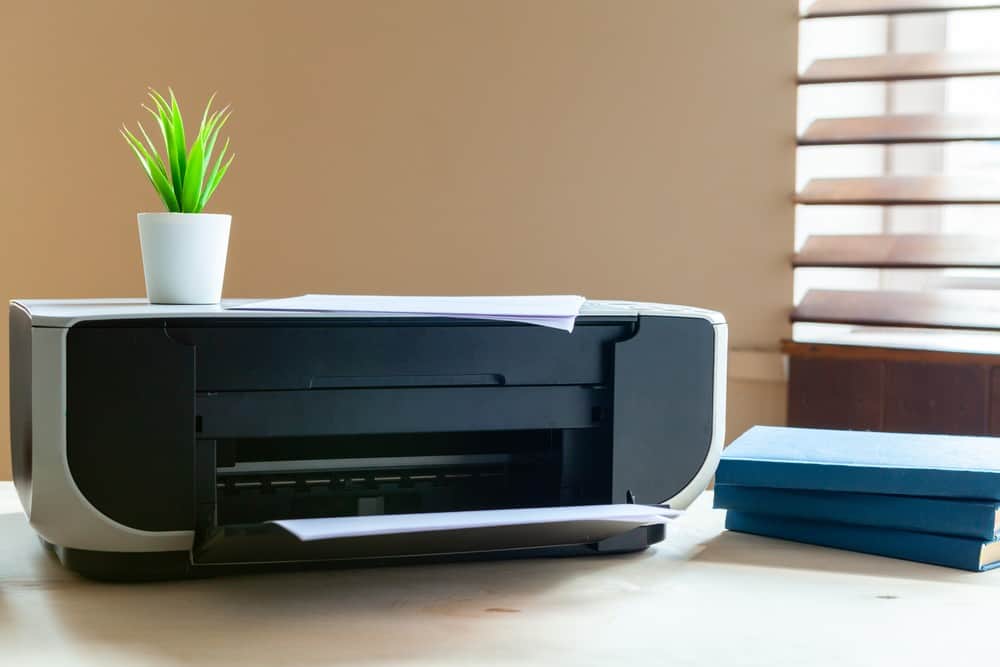
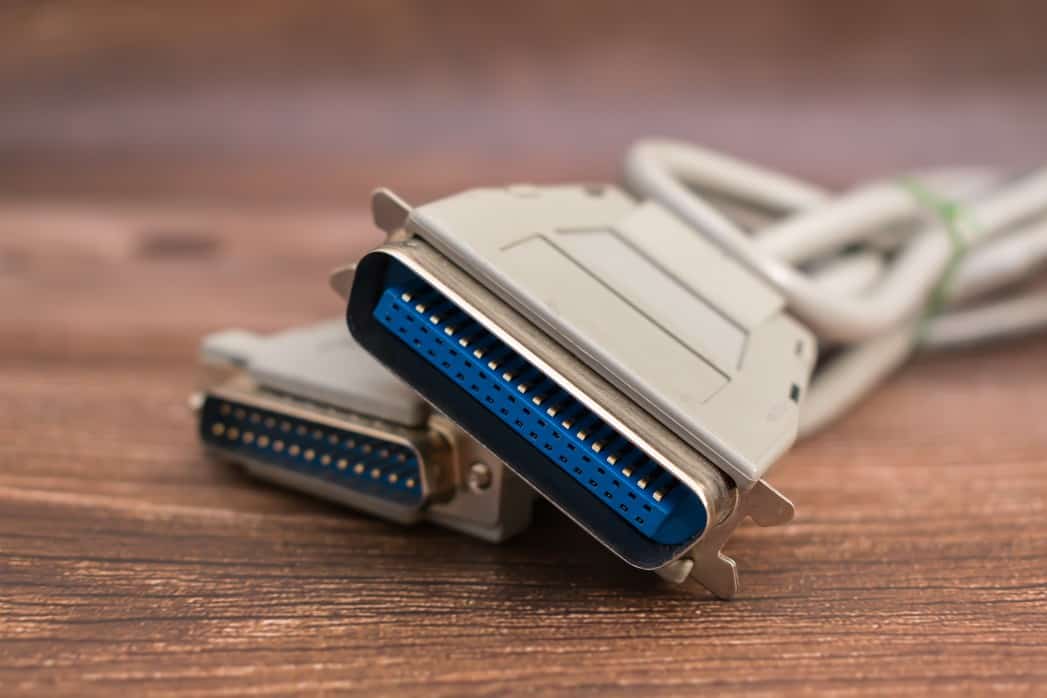
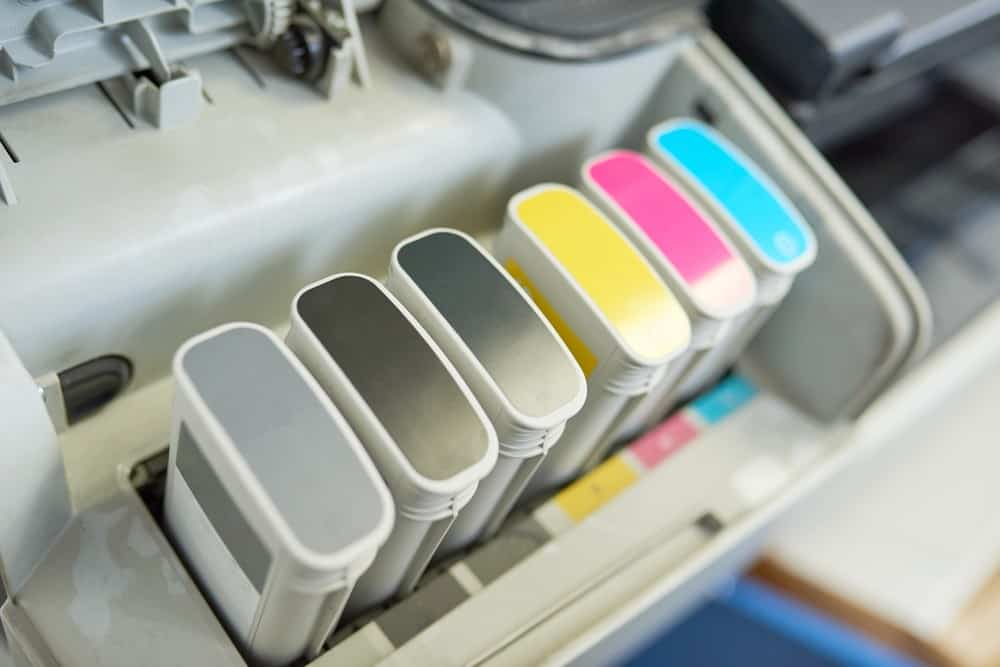

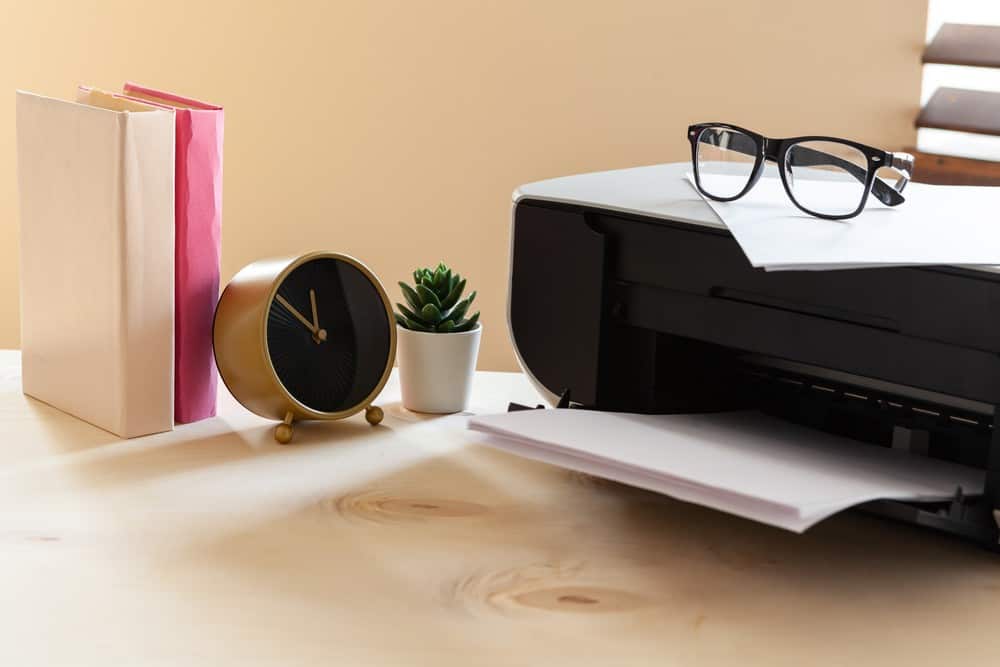
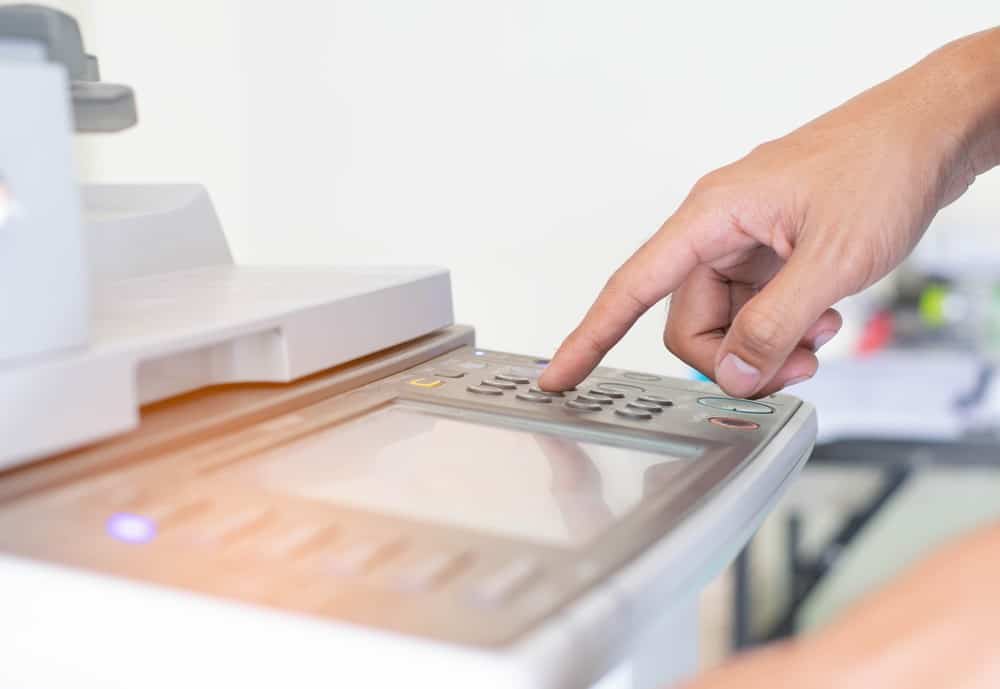
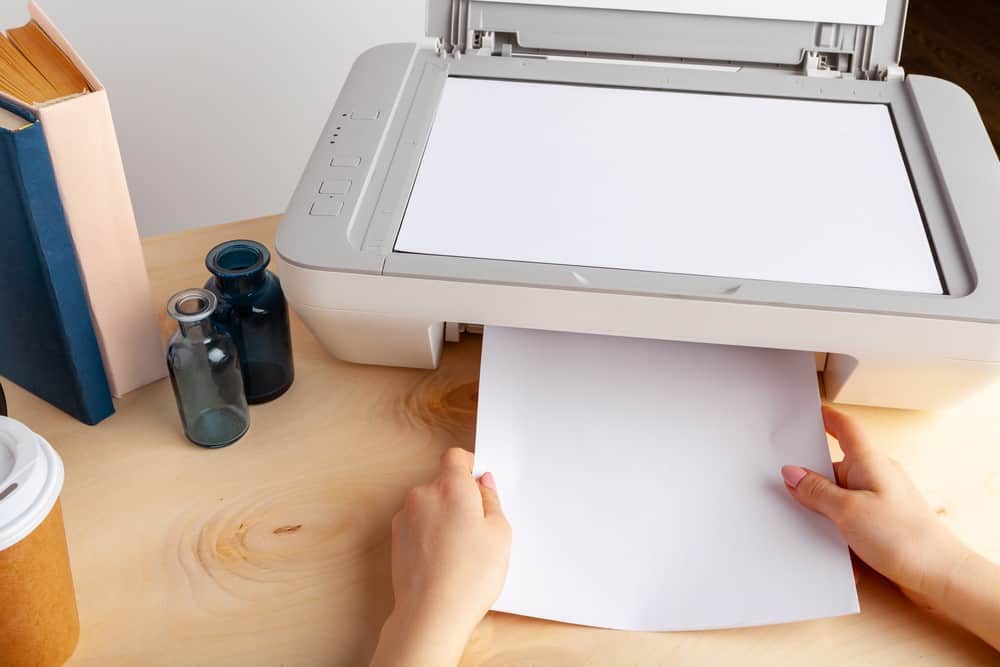
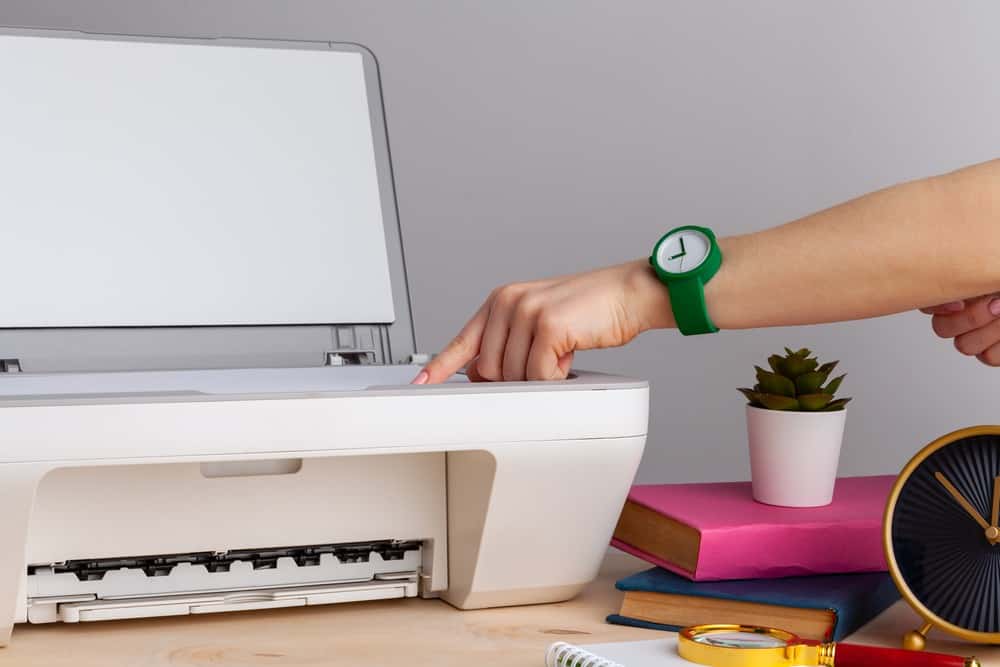
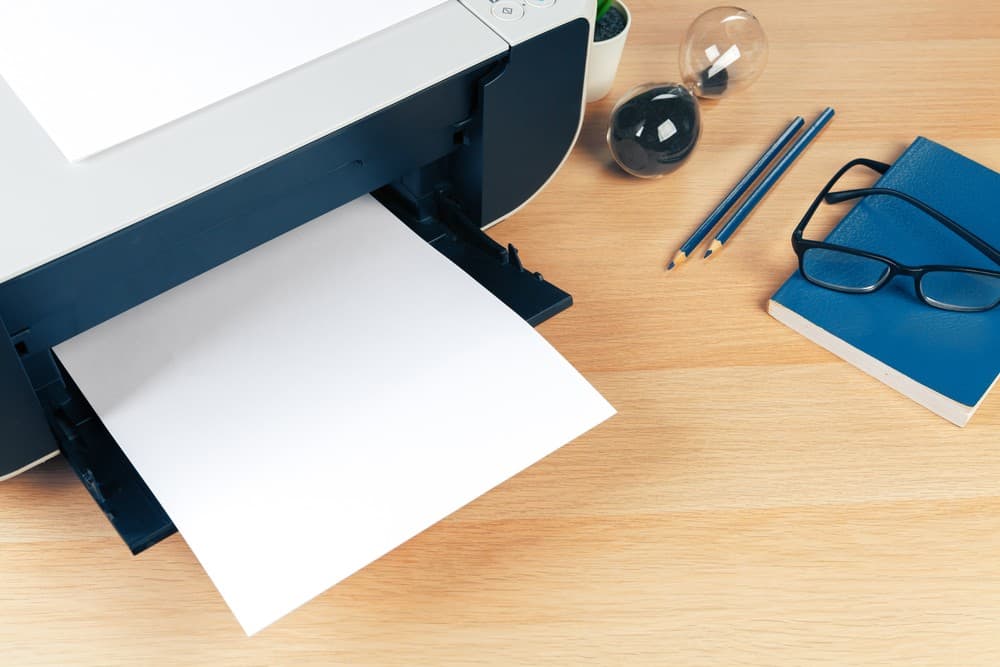
![Best All-in-One Printer in [year] ([month] Reviews) 27 Best All-in-One Printer in 2025 (November Reviews)](https://www.gadgetreview.dev/wp-content/uploads/best-all-in-one-printers.webp)
![Best Home Scanner in [year] ([month] Reviews) 28 Best Home Scanner in 2025 (November Reviews)](https://www.gadgetreview.dev/wp-content/uploads/Canon-TS5120-Wireless-Printer-Scanner-Review.jpg)
![Best BenQ Monitors in [year] 29 Best BenQ Monitors in 2025](https://www.gadgetreview.dev/wp-content/uploads/best-benq-monitor-image.jpg)
![Best Sublimation Printers in [year] 30 Best Sublimation Printers in 2025](https://www.gadgetreview.dev/wp-content/uploads/disable-printer-color-management-image-1.jpg)
![Best Envelope Printers in [year] 31 Best Envelope Printers in 2025](https://www.gadgetreview.dev/wp-content/uploads/best-envelope-printers-imge.jpg)
![Best 3D Printers in [year] ([month] Reviews) 32 Best 3D Printers in 2025 (November Reviews)](https://www.gadgetreview.dev/wp-content/uploads/Zortrax-M200-3D-Printer.jpg)
![Best Barcode Printers in [year] 33 Best Barcode Printers in 2025](https://www.gadgetreview.dev/wp-content/uploads/best-barcode-printers-image.jpg)
![Best Portable Photo Printers in [year] 34 Best Portable Photo Printers in 2025](https://www.gadgetreview.dev/wp-content/uploads/best-portable-photo-printer-image.jpg)
![Best HP Printers in [year] 35 Best HP Printers in 2025](https://www.gadgetreview.dev/wp-content/uploads/best-hp-printers-image.jpg)
![Best Printers for Photographers in [year] 36 Best Printers for Photographers in 2025](https://www.gadgetreview.dev/wp-content/uploads/best-printer-for-photographers-image.jpg)
![Best Printers for Teachers in [year] 37 Best Printers for Teachers in 2025](https://www.gadgetreview.dev/wp-content/uploads/best-printers-for-teachers-image.jpg)
![Best iPhone Photo Printers in [year] 38 Best iPhone Photo Printers in 2025](https://www.gadgetreview.dev/wp-content/uploads/best-iphone-photo-printer-image.jpg)
![Best 11x17 Printers in [year] 39 Best 11×17 Printers in 2025](https://www.gadgetreview.dev/wp-content/uploads/best-11x17-printers-image.jpg)
![Best Printers with Cheap Ink in [year] 40 Best Printers with Cheap Ink in 2025](https://www.gadgetreview.dev/wp-content/uploads/best-11x17-printers-image-1.jpg)
![Best Bluetooth Printers in [year] 41 Best Bluetooth Printers in 2025](https://www.gadgetreview.dev/wp-content/uploads/best-bluetooth-printer-image.jpg)
![Best Receipt Printers in [year] 42 Best Receipt Printers in 2025](https://www.gadgetreview.dev/wp-content/uploads/best-receipt-printer-image.jpg)
![Best Canon Printers in [year] 43 Best Canon Printers in 2025](https://www.gadgetreview.dev/wp-content/uploads/best-canon-printers-image.jpg)
![Best Compact Printers in [year] 44 Best Compact Printers in 2025](https://www.gadgetreview.dev/wp-content/uploads/best-compact-printer-image.jpg)
![Best Printers For Cricut in [year] 45 Best Printers For Cricut in 2025](https://www.gadgetreview.dev/wp-content/uploads/best-printer-for-cricut-image.jpg)
